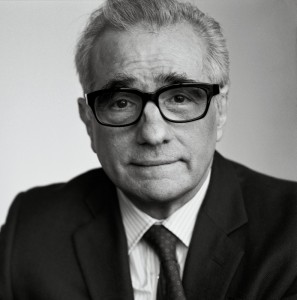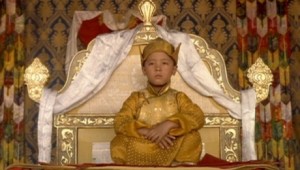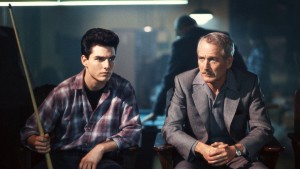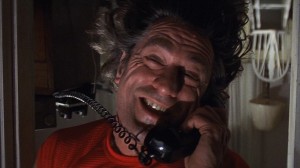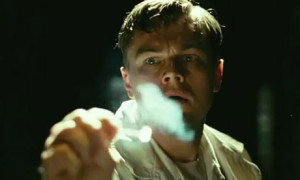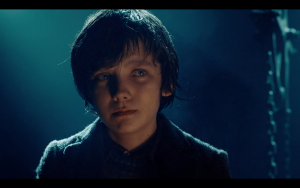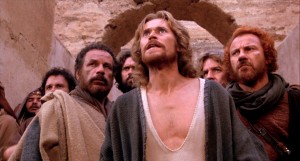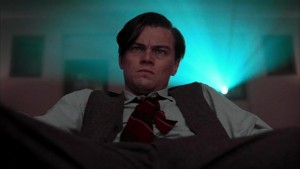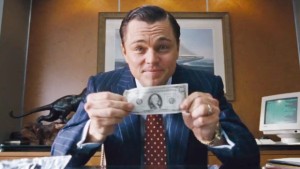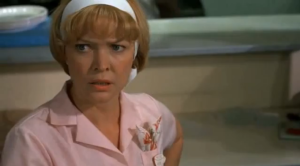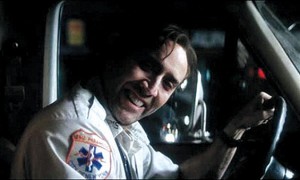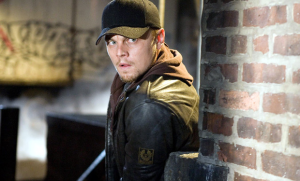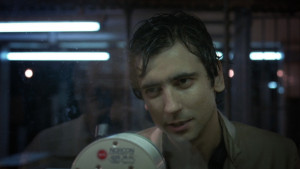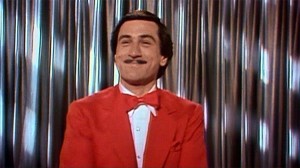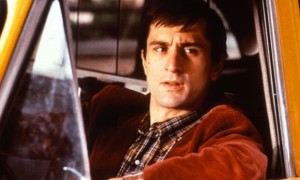When I think of Scorsese, I think of his kineticism—filmmaking defined by boundless energy, daring edits, bold characters, and carefully managed chaos (often mistaken for glorification of his usually sinful subjects).
At 72, Scorsese shows no signs of slowing down, either in output or ambition. While he seems to have given up screenwriting, each of his films unmistakably bears his mark, and you believe he’s deeply immersed in each script he has chosen to take on.
With 23 feature films under his belt, ranking these films was no small feat. As with my ranking of the Coen Brothers (here), I have included only Scorsese’s narrative feature films for which he has directorial credit.
23. Boxcar Bertha (1972)
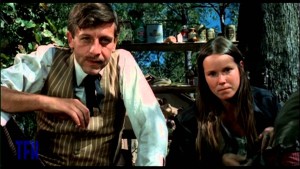 Writer(s): Joyce Hooper Corrington, John William Corrington
Writer(s): Joyce Hooper Corrington, John William Corrington
Well, you’ve got to start somewhere. Even if that somewhere is a landfill. Made for legendary exploitation producer Roger Corman, Scorsese’s second feature told the story of train robber Bertha Thompson with a surplus of nudity, violence, and near constant narrative incoherence. While certainly not poorly directed, it may depress viewers to know even Scorsese had cater to the baser instincts earlier in his career. At least the shotgun rampage toward the end satisfies with its cartoonish sense of vindication. That said, John Cassavetes had it right when he told Scorsese “you’ve just spent a whole year of your life making a piece of s***.”
22. Kundun (1997)
Make no mistake, Kundun represents a significant improvement over Bertha. Even by Scorsese’s standards, conveying the life of the 14th Dalai Lama was a huge departure from the mean streets of New York. It’s clear that Scorsese was fully committed to the subject matter, and hoped to honor a powerful legacy. But in doing proper dignity to the man and his monumental struggles, Scorsese lets the material become inert and lifeless. While he crafts an atmosphere of deep spirituality, he also makes the only lavishly produced Scorsese picture you’ll feel compelled to sleep through.
21. The Color of Money (1986)
Definitely one of Scorsese’s more commercial ventures, this sequel to Robert Rossen’s classic The Hustler gave Paul Newman a chance to reprise his role as pool shark “Fast” Eddie Felsion. Packed with feats of talent and deception, the film feels less like a true sequel to The Hustler than a jumping-off point for pool hustling as a lifestyle. While it’s intriguing to watch Felson take on a protégé in Tom Cruise’s Vincent and joust with an exacting Mary Elizabeth Mastrantonio, it all feels rather impersonal for Scorsese (he took it on so that he could film The Last Temptation of Christ). It doesn’t add up to a whole lot (and seems to miss the point of The Hustler), but manages to entertain with some intriguing twists.
20. Cape Fear (1991)
Treasurers of “film artistry” need not apply to this grungy remake of the 1962 film of the same name. Nick Nolte plays the lawyer whose family is terrorized by former client Max Cady (played deliciously by longtime Scorsese collaborator Robert De Niro). Scorsese embraces the trashy thrills here with aplomb, as both creeping terror and violent encounters are pitched to campy heights. Though he was just biding time until The Age of Innocence, it’s nice to see Scorsese having fun with the racier material than usual. A veteran at this point, he adds verve (and class) to an ultimately conventional thriller.
19. New York, New York (1977)
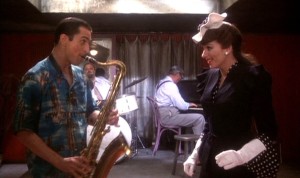 Writer(s): Earl Mac Rauch, Mardik Martin
Writer(s): Earl Mac Rauch, Mardik Martin
Regarded as Scorsese’s only musical (not true, it’s a drama with musical bits) and as a major dud in his filmography (also not true), this film may be one of Scorsese’s most overlooked. De Niro plays a temperamental sax player, while Liza Minnelli costars as a shy but talented songstress in post-WWII America. Confident in his cast but not in the shooting script, Scorsese encouraged De Niro and Minnelli to improvise their lines, resulting in uneven but spontaneous exchanges as love blossoms and egos clash. The inevitable decline in their relationship culminates in a gorgeously rendered musical number for Minnelli. Believe me when I say age has been kind to this one.
18. Shutter Island (2010)
Scorsese tries his hand at horror in this atmospheric rendering of a federal marshal’s investigation of a Massachusetts asylum. As a tense, paranoid thriller, this film largely succeeds thanks to Scorsese the formalist in peak form here. But I do wish the film could have stayed mum on the asylum’s intentions; there’s grand material here for conspiracy absurdism, as Leonardo DiCaprio’s Teddy Daniels delves deeper into the island’s mysteries. It’s wonderful technical work, but it provides too many answers instead of lingering on questions. Still, it’s nice to see that Scorsese could knock conventional horror films out of the park.
17. Hugo (2011)
In crafting his first film that could be labeled “family friendly,” Scorsese chooses subject matter that only falls closest to his heart. Based upon a book by Brian Selznick, the film tells the story of young Hugo Cabret, an orphan living in a Paris train station who finds disgraced film pioneer Georges Méliès working a dinky stand. What follows is an enchanting story of adventure and friendship that never sags even in its unabashed love of early cinema. While John Logan’s script occasionally clunks with thematic obviousness, the film’s real strength is in its sincerity, from Asa Butterfield’s clear-eyed Hugo to Ben Kingsley’s bitter Méliès.
16. Gangs of New York (2002)
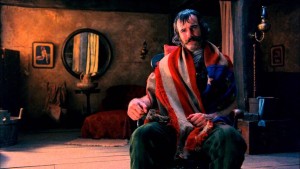 Writer(s): Jay Cocks, Steven Zaillian, Kenneth Lonergan
Writer(s): Jay Cocks, Steven Zaillian, Kenneth Lonergan
The first hour of this mid-nineteenth century drama deserves to stand with the best of Scorsese’s work, as we’re privy to grand, clockwork visions of a time long forgotten. Daniel Day-Lewis towers over it all, bigger than life, but subtly betraying his gang leader’s insecurities. From the design to the cinematography, it’s hard to believe many productions have achieved this kind of ambitious spectacle. Thanks to three of the best screenwriters in the business, the setup is brilliant, dark, soul-churning stuff. It’s once the actual thrust of the narrative kicks in where we’re privy to a rather routine revenge story. It looks like nothing you’ll ever see, but the shame is it could have been so much more.
15. Casino (1995)
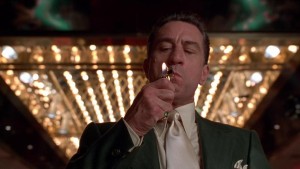 Writer(s): Martin Scorsese, Nicholas Pileggi
Writer(s): Martin Scorsese, Nicholas Pileggi
The latter mob movie from Scorsese and Pileggi (based upon a Pileggi book) is also the inferior one, but that doesn’t mean it’s not an engrossing epic. In detailing the reign of mafia odds-maker Sam Rothstein over the Tangiers casino (in conjunction with the Mafia), the film draws obvious parallels to 1990’s Goodfellas, but it lacks the freshness and restraint of that classic. If anything, it’s the exploitation version of that story. Still, it’s always interesting, and there’s career-best work from Sharon Stone as the tragically affecting Ginger. As a study of process and the human errors that make it go wrong, Casino more than satisfies.
14. The Last Temptation of Christ (1988)
Willem Dafoe might not have been most people’s first choice to play Jesus (his Christ pose in Platoon notwithstanding), but he feels right at home in Scorsese’s adaptation of the Greek novel by Nikos Kazantzakis. Hitting all the major beats of a familiar tale, Scorsese allows the controversial addition of temptation as a constant source of aggravation for Jesus. The film dares to show him as a rebel and iconoclast, but also a man full of self-doubt (especially in his debates with Mary Magdalene, hauntingly portrayed by Barbara Hershey). While the proceedings can sometimes play out in stiff recreation, films like these can work for the faithful, the secular, and the ambivalent in equal measure.
13. The Aviator (2004)
As a filmmaker himself, Scorsese was well equipped to tackle the life story of director, pilot, and tycoon Howard Hughes in all his idiosyncratic glory. The film is a profoundly sympathetic portrait that examines every aspect of Hughes’s life. From his genius and ambition, to his mental and emotional turmoil, to the vultures who seek to destroy him, Hughes comes across as the embodiment of human contradiction. One of Leonardo DiCaprio’s more solid performances under Scorsese, he’s matched by brilliant supporting work from Alan Alda as a leering senator. It seems like subject matter destined for Oscar glory (it scooped up a ton of nominations) but never loses that trademark Scorsese grit.
12. Who’s That Knocking at My Door? (I Call First) (1968)
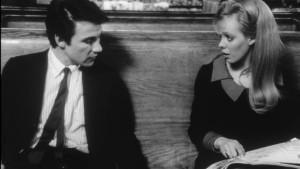 Writer(s): Martin Scorsese, Betzi Manoogian
Writer(s): Martin Scorsese, Betzi Manoogian
Scorsese’s debut film, unfortunately forgotten these days, reveals a talented young filmmaker already flaunting his mastery of the medium, while foretelling the treasures to follow. A young man who strikes up a romance, Harvey Keitel’s J.R. finds himself in moral chaos when he learns his girlfriend was once raped. What follows is a thoroughly compelling if admittedly messy exposure of male archetypes that Scorsese would expound upon in later, better movies. But as it bursts forth with youthful excess and strange fits of violence, you sense the talent that Roger Ebert referred to when he called it “a great moment in American movies.”
11. The Wolf of Wall Street (2013)
Scorsese’s exposé of Wall Street greed and corruption proved more divisive than the majority of his efforts, thanks to its in-your-face debauchery and unrepentant characters. Our guide through the Wall Street bacchanal is Jordan Belfort, a con artist whose scams ruined countless lives. But the film roundly indicts Jordan and his money grubbing miscreants, showing how wealth has ironically reduced them to a state of total dependency. By continually blurring the line between financial need and financial greed, Scorsese and screenwriter Terence Winter expose these high rollers for the sad sacks of humanity they are.
10. Alice Doesn’t Live Here Anymore (1974)
Scorsese must have seemed an odd choice to helm this film about a female rambler, considering his biggest credits to this point were gangster and exploitation pictures. But the film highlights what Scorsese has shown as a master of situational character study: sensitivity toward all his subjects. Having Ellen Burstyn play the title character certainly doesn’t hurt either. She makes us cheer one moment and wring our hands the next, displaying both naiveté and widsom. Far more than a “decent chick flick,” Scorsese elevates an already nuanced script to transcendent moments of growth and realization.
9. The Age of Innocence (1993)
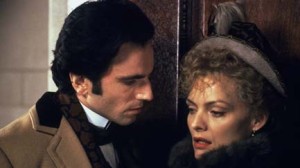 Writer(s): Martin Scorsese, Jay Cocks
Writer(s): Martin Scorsese, Jay Cocks
It might not be immediately apparent why Scorsese called this adaptation of Edith Wharton’s seminal 1920 novel his “most violent film.” But when you peel back the layers of 1920s New York high society, you find the reeking stench of power politics that fits right in with Scorsese’s gangster films. Daniel Day-Lewis is achingly tragic as the able lawyer who rages against the corrupt system he’s a part of—but only when convenient. Impeccably designed and gorgeously attired, the film maintains an eerie chill behind each polite word and gesture. It’s marred only by unnecessary (if elegant) voice-over narration.
8. Bringing Out the Dead (1999)
Bringing his time-honored themes of Catholic guilt and night stalkers to the EMS paramedic scene, Scorsese spins a unique New York ghost story. The film is coated in a constant state of dream, as Nicolas Cage’s Frank Pierce wrestles with his powerlessness in saving individuals and communities. Increasingly hallucinatory, the film represents a trip to the underworld for three nights, with Pierce slowly giving in to the madness of it all. Look out for a commanding performance from Ving Rhames, who thunders and preaches as he brings a drug addict “back to life.” And the film reaches a well-earned, hopeful coda by the end.
7. The Departed (2006)
Scorsese had to move from New York to Boston in order to collect his first Academy Award, and the Massachusetts-set remake of Infernal Affairs holds up well in the director’s filmography. Guilt continues to resonate in a story that’s very much about identity, as a state police officer and an Irish mobster go undercover in each other’s organizations. Jack Nicholson hams it up as mobster Frank Costello, but Leonardo DiCaprio leaves the bigger impression as he bears witness to violent crime after violent crime. Pulsing with vivid characters, the film has all the Scorsese trademarks you’d expect, wrapped up in a suspense-laden narrative.
6. After Hours (1985)
The director’s most Kafkaesque film stars Griffin Dunne as word processor Paul Hackett, experiencing the worst night of his life in SoHo. Whether it’s a taxi ride from Hell or pursuit by a vengeful ice cream truck driver, this comedy of surreality unfolds with one great comedic twist after another. But it’s more than just farcical nightmare romp; Scorsese creates a tragicomic version of the protagonist’s psyche, one where all women are traitors and the city is out to get him. With fear as the engine, and Dunne’s brilliant comedic performance, it might just be Scorsese’s best pure comedy.
5. The King of Comedy (1983)
Despite its name, this one is not pure comedy. Robert De Niro paints an agonizing portrait of Rupert Pupkin, a would be comedian with 100% of the ambition and 0% of the talent. Attempting to impress famous talk show host Jerry Langford (a subdued, magnificent Jerry Lewis), Pupkin resorts to kidnapping to achieve his time in the spotlight. Scorsese commits to hazy ambiguity, fazing between dream and reality to mirror the delusional mental states of its characters. While the film will likely make you squirm in discomfort, it also manages to humanize its crazy psychopaths. Fame and fortune loom in front of them, tantalizingly, just beyond their grasp.
4. Mean Streets (1973)
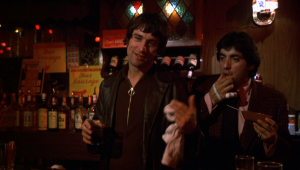 Writer(s): Martin Scorsese, Mardik Martin
Writer(s): Martin Scorsese, Mardik Martin
Having honed his talents in Who’s That Knocking at My Door, Scorsese returns to the streets of his hometown to capture the obsessions and foibles of low down hoods. While Harvey Keitel anchors the film as Charlie, De Niro becomes a star overnight with his unpredictable turn as Johnny Boy. In scenes of detail and clarity, we understand all the political and personal motivations that cause and abet sudden bursts of violence, and see the terribly thin line between horrible consequences and childish scrapes. Scorsese made his reputation here, his first great film that would lead to many more.
3. Taxi Driver (1976)
A cultural landmark, the seminal tale of cabbie Travis Bickle achieves true terror for its depiction of a disturbed crusader. And Scorsese thrusts us right into that troubling mental space. We see New York both from Bickle’s eye-view (with the city filtered through rainy windows) and his words (in rambling monologues where he decries human “garbage”). How much is real, how much is in his head? It doesn’t matter for someone like Bickle, whose inevitable descent into violence proves his only chance for human connection. And yet Robert De Niro somehow makes the sociopath vaguely relatable. Bickle represents the many souls who have been cast out by society and themselves alike.
2. Goodfellas (1990)
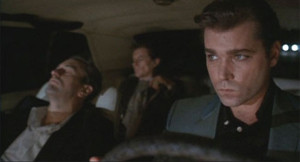 Writer(s): Martin Scorsese, Nicholas Pileggi
Writer(s): Martin Scorsese, Nicholas Pileggi
I’ve seen this Scorsese movie more than any other, and I’m waiting for the day when it gets old. It’s an epic in terms of sweep, focusing on the Mafia grunts as opposed to upper management. Covering the period of 1955 to 1980, Scorsese lays out an impeccable recreation of mafia life, and in so doing, gives us his richest character study. Noted for Joe Pesci’s manic cowboy performance, it features career defining performances from nearly all its cast, most notably Ray Liotta, who walks a thin line between cipher protagonist and full-on participant in the mob life. From the multitude of perspectives (including Lorraine Bracco’s stellar turn as a Liotta’s wife) to the stylish, go-for-broke editing, the film’s detail and specificity make it my favorite mob movie of all time.
1. Raging Bull (1980)
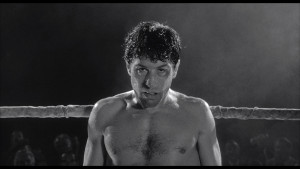 Writer(s): Mardik Martin, Paul Schrader, Martin Scorsese, Robert De Niro
Writer(s): Mardik Martin, Paul Schrader, Martin Scorsese, Robert De Niro
Once again I’m playing the popular opinion, but it’s my opinion too, dammit. In Robert De Niro’s definitive performance, he gives his lifeblood to portray Jake La Motta, a talented boxer in the ring who lost everything outside of it. While initially dismissed by some critics as an overt train-wreck (with its raw depiction of verbal and physical abuse) the film finds real tragedy in La Motta, a man who can’t seem to express himself in any way that doesn’t involve savagery. We see the effect of that tragedy on everyone around him, and it’s all depicted in gorgeous black and white photography. By wrestling with his animal self, LaMotta betrays his very human heart, trapped in a prison of its own making. Scorsese directed this masterpiece within an inch of its life, thinking it might be last. If it had been, it would have been quite the farewell.
Continuing to battle his stigma as a “mafia director,” Scorsese’s next project is an adaptation of Shūsaku Endō’s 1966 novel Silence. Here’s to Scorsese expanding his interests even into his 70s. Make no mistake; this man will go down as one of the greats.
